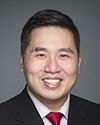Thank you, Mr. Chair, for having me back to speak to you and the members of the committee on the Auditor General's report number 5, pertaining to National Defence.
You will notice some new faces today.
I would like to introduce Lieutenant-General Lamarre, who has just assumed his duties as commander, military personnel command; Brigadier-General Steven Whelan, commander, military personnel generation; Colonel André Demers, commander, Canadian Forces recruiting group; and Susan Truscott, director general, military personnel and research analysis.
Lieutenant-General Lamarre is heading up the team that will be responsible for implementing all the recommendations in the report because we, the defence team, have taken them to heart.
We appreciate the auditor general's work in identifying the weaknesses in the Canadian Armed Forces' approach to recruitment and retention. We are committed to addressing his concerns.
Last week, we tabled with you our management action plan that addresses each of the recommendations. We are conducting an extensive review of our entire recruitment process to make it more timely and efficient, but we're not waiting for the review to be complete before we move forward. We've already used the Auditor General's recommendations to refocus our efforts and to improve the way we attract, select, and enrol new recruits and retain military personnel.
I can tell you personally that the management and care of our people in the armed forces is among the highest priorities of the minister, the chief of the defence staff, and myself. Key among these goals is increasing the representation of women to 25% of all Canadian Armed Forces members by 2026, at 1% per year.
Canada is a leader among NATO countries with respect to the number of women in our ranks and one of the first to allow women to serve in all occupations, but we need and want to do more. We're at 15.2% female representation now, not quite as low as the 14% quoted in the media in February but not as high as we need. Encouragingly, the number of women who enrolled in the military was up 38% this past fiscal year, and the number of women in the Canadian Armed Forces increased by 0.3%, a small change but the first positive growth in more than a decade.
We've convened three working groups that will propose, over the summer, a way to increase these numbers: first, with a strategic intake plan that sets realistic targets; second, with branding, marketing, and targeted advertising strategies; and third, with ways to address barriers to recruitment. In the meantime, to help close the gap between 15% and 25%, we're fast-tracking the applications of qualified women to our military colleges, expediting the intake process for women who meet the entry standards, and reaching out to women who started but did not complete the application process. We want to encourage them to reconsider joining.
Of the 1,046 female applicants we've been able to contact so far, we've reopened files for 457 of them, and 96 are being processed for enrolment. That's about 9%. It's a good start, but we need to encourage more women to apply in the first place.
In February and March, we ran advertising campaigns on Facebook and Linked In tailored to women in the military. The campaign highlighted the wide variety of interesting and exciting jobs in the armed forces and in civilian roles. It spoke to personal fulfillment, to the opportunity to help others, and to the ability to achieve work-life balance, acquire transferable skills, and receive paid education and training for salary.
More campaigns are planned for this fiscal year to attract women and men of all backgrounds.
Our goal continues to be to have indigenous peoples make up 3.5% of the armed forces, and for visible minorities to make up 11.8%. We've doubled the number of visible minorities in the forces over the last 10 years, and we want to double it again. As the minister and the chief of the defence staff have said, diversity is our strength.
We simply cannot afford not to engage quality candidates. However, we do compete with employers across the country in specialized occupations such as doctors, engineers, social workers, and others in high demand. The recruitment of mental health professionals is especially difficult due to the short supply of psychiatrists, psychologists, mental health care nurses, and case workers. The challenge is made greater by the demands associated with a military career. It's an exacting and sometimes hazardous profession. Realities such as deployment, separation from family, relocation, and the general rigours of military life do not appeal to everyone.
We're not going to shy away from our task. We know we'll need to dedicate more financial and human resources to recruiting and training the required number of personnel for each occupation. We're putting in place measures to improve our five-year recruitment planning and to ensure that adjustments can be made as needed to recruiting requirements for specific occupations. We're going to continue to launch advertising and marketing campaigns that raise awareness of the more than 100 different jobs and career choices in the armed forces.
Attracting people's attention, sparking their interest, and finalizing their enrolment are three distinct tasks. We continue to improve and better target our advertising and marketing to get better at enrolment too.
The Auditor General's report attributes a notable loss of applicants to lengthy delays in the recruiting, and we agree. In December 2016, we launched a 10-month pilot to streamline the intake and speed up the enrolment of applicants into the reserve force, as well as for the Royal Canadian Navy, the Canadian Army, and the Royal Canadian Air Force. Our goal for the regular force is to enrol most of the new applicants within 60 to 90 days. For those who have complicated security or medical review demands, our goal is within 180 days.
Once in, we need to have these recruits begin their basic training almost immediately. We've hired 26 military instructors to ensure that they reach their operational functional point as soon as possible. We're implementing a new system to decrease wait times for military training by occupation. To retain these new members, we're creating a work environment that enables as much ease of movement as possible within the institution.
For the primary reserves, we aim to process people within a matter of days, not months, so that we can meet our target of 28,500 primary reservists by the end of the 2018-19. We're emphasizing to Canadians that the reserves are a meaningful way to serve their country, even as they go to school or work in another job. There's no commitment to move, no obligation to deploy, and no long-term contract, just a flexible schedule and the chance to train and serve close to home.
A career in the Canadian Armed Forces has its challenges, but as I am sure Lieutenant-General Lamarre will attest, it's also one of the most rewarding work and life experiences available.
In the two years I've had the privilege of being deputy minister of National Defence, I've had the honour of working with many women and men in the armed forces. Whether corporals, generals, members of the regular force or the reserves, the soldiers, sailors, and aviators I've met are proud of the work they do and the uniform they wear. Following the guidance of the Auditor General, we need to get that message out.
Last year, the armed forces grew for the first time in five years. This year's results look even more promising. I'm proud to help lead a defence team that is committed to being more inclusive, more diverse, and more qualified than ever. I am confident that under leadership of the chief of defence staff, General Vance, and Lieutenant-General Lamarre, we will build the strength and diversity of the forces even further.
Thank you. My colleagues and I will welcome any questions you may have for us.










